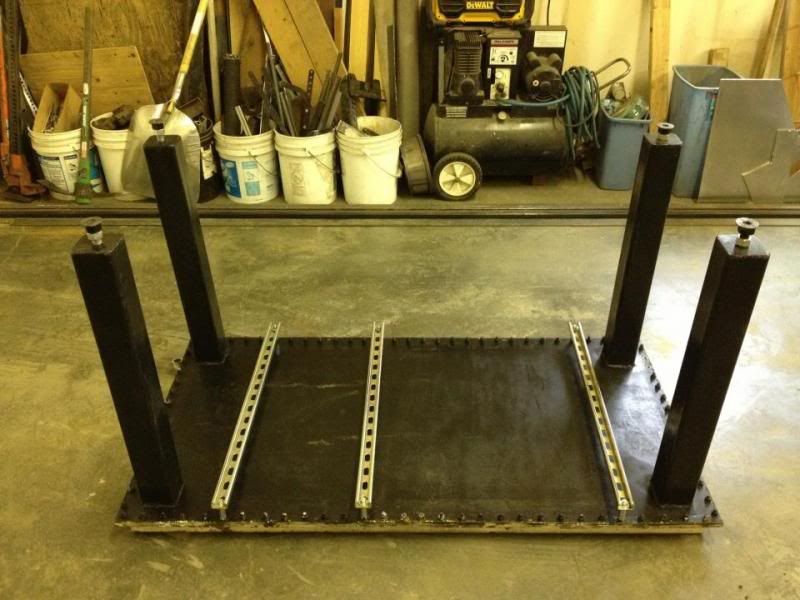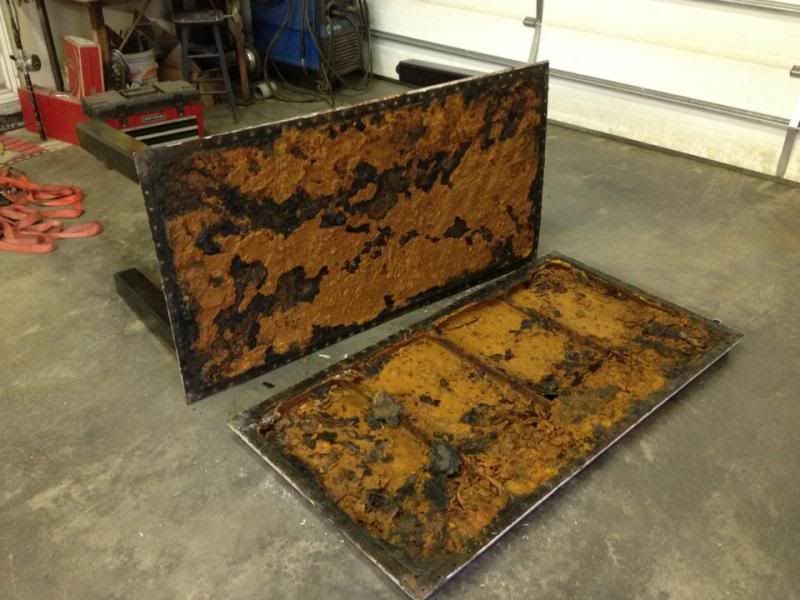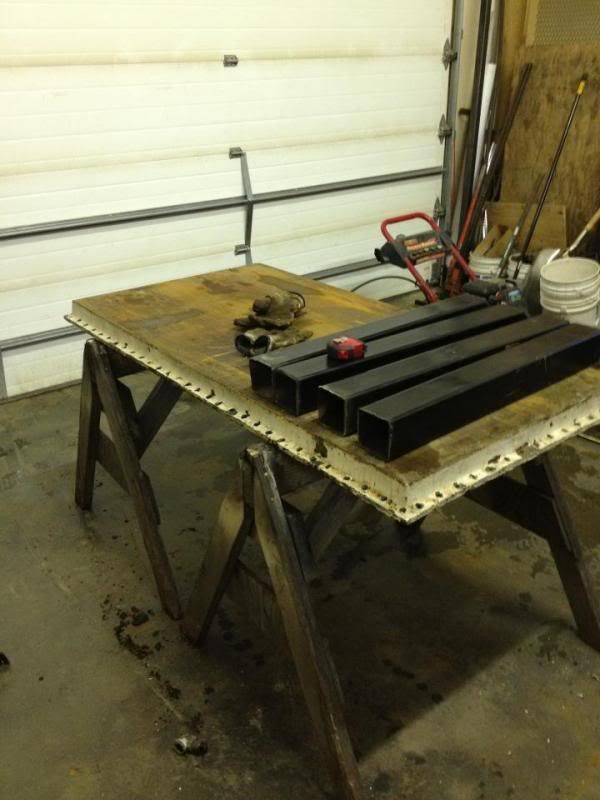A little advice?
Posted: Tue Apr 30, 2013 12:00 pm
So I had a project come in the shop yesterday, a 1950's era water cooled taffy table in need of a rebuild. Upside down in this pic, the thing weighs about 600#. The entire top and sides are 1/2" thick steel and has a sheet of 1/4" steel bolted to the bottom. There are four chambers to control water flow through the table with an inlet and outlet pipe in the ends.

50+ years of gunk...

My goal is to replace the bottom sheet (1/4") and brace the legs. The customer wants me to cut off the flange around the top and simply weld the perimeter of the sheet.

My question is what would be the best approach to welding this to avoid warping? I figured I would tack the snot out of it of course but I'd like to avoid a bunch of stops and starts. I'll also be welding some angle iron across the middle to keep the bottom from developing a sag like the previous one has.
Any suggestions on how best to tackle this one?
I know rebuilding it to original spec would be the best way to do this, but the customer wants it welded so it isn't my decision. Also, this is a bit time sensitive since he is opening a confectionary shop next week and this is an integral part of his business. I don't have time to get the top milled and the bottom piece drilled for 200 bolt holes...

50+ years of gunk...

My goal is to replace the bottom sheet (1/4") and brace the legs. The customer wants me to cut off the flange around the top and simply weld the perimeter of the sheet.

My question is what would be the best approach to welding this to avoid warping? I figured I would tack the snot out of it of course but I'd like to avoid a bunch of stops and starts. I'll also be welding some angle iron across the middle to keep the bottom from developing a sag like the previous one has.
Any suggestions on how best to tackle this one?
I know rebuilding it to original spec would be the best way to do this, but the customer wants it welded so it isn't my decision. Also, this is a bit time sensitive since he is opening a confectionary shop next week and this is an integral part of his business. I don't have time to get the top milled and the bottom piece drilled for 200 bolt holes...